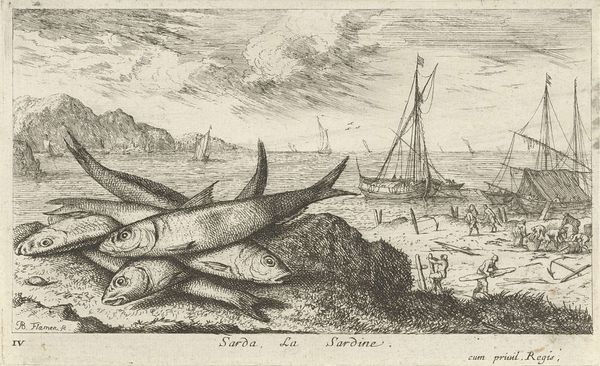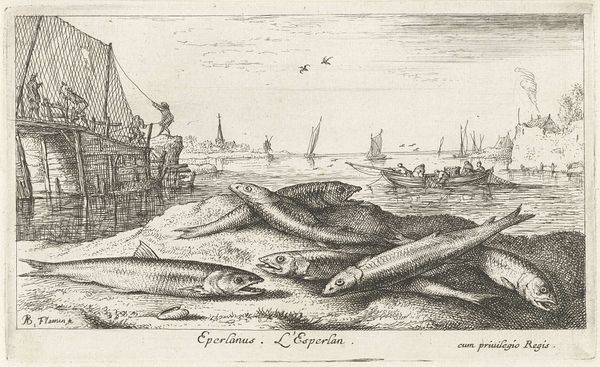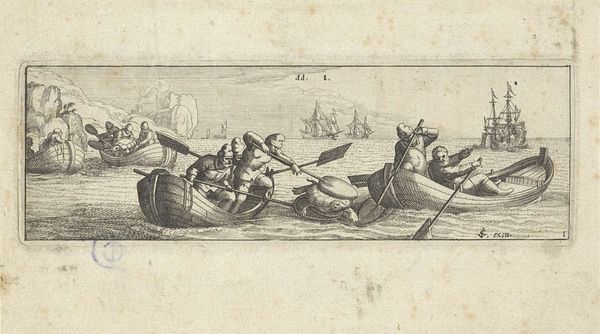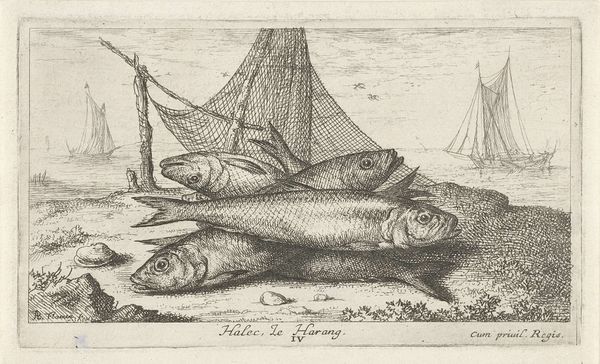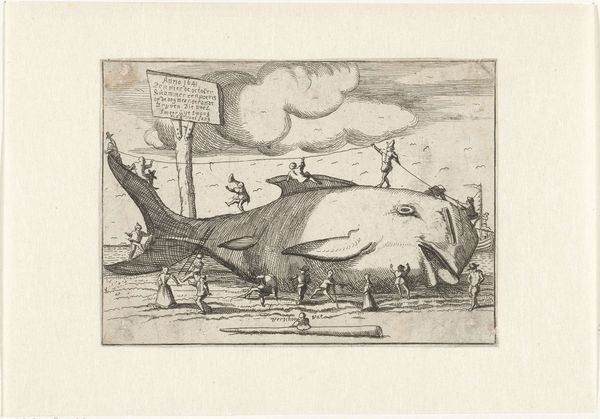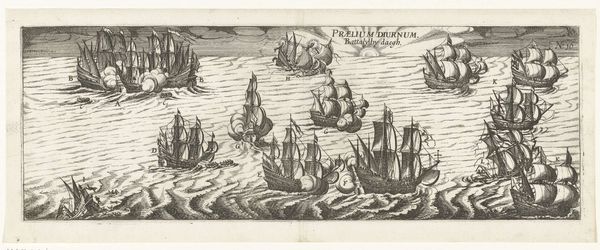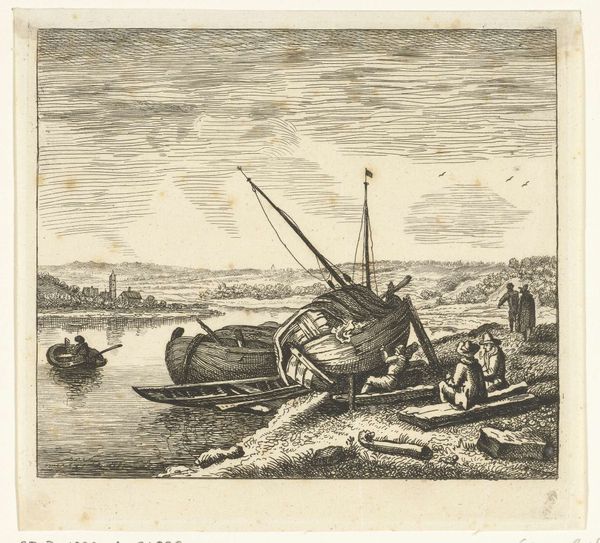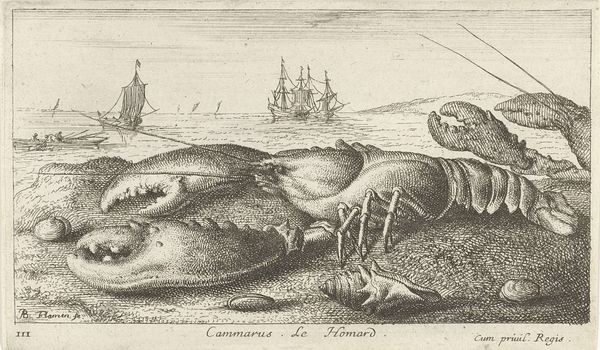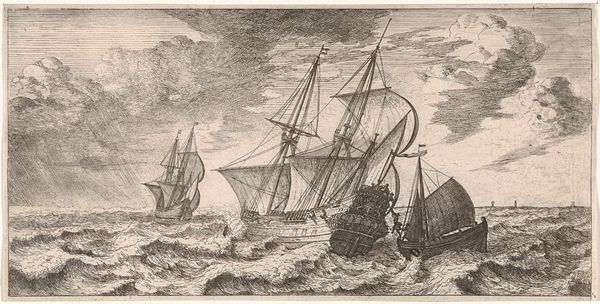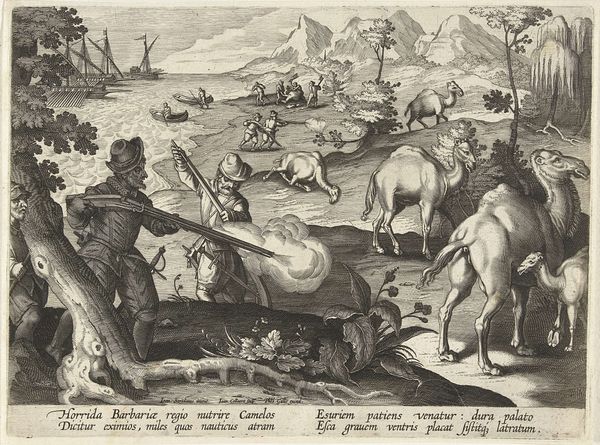
print, etching
#
narrative-art
#
dutch-golden-age
# print
#
etching
#
landscape
#
genre-painting
#
realism
Dimensions: height 106 mm, width 174 mm
Copyright: Rijks Museum: Open Domain
Editor: So, we’re looking at Albert Flamen’s etching, “Ansjovissen bij een mand en visnet,” from 1664, a delightful depiction of anchovies with fishing gear. I find myself drawn to the contrasting activity - a stillness embodied by the heap of fish juxtaposed with the human hustle in the background. What do you make of this busy yet still scene? Curator: It strikes me as a snapshot of a bustling coastal community. Imagine the salt-laced air, the cries of gulls, the rough hands sorting the day's catch! Flamen masterfully captures this sense of place, doesn't he? But it’s more than just a genre scene; notice how the artist gives such careful detail to the fish, creating almost individual portraits. Are they merely produce, or do they hold a different significance for him, for this time period? Editor: That’s a thought. It makes me reconsider their position in the foreground. Curator: Right? These humble anchovies practically jump off the page! Consider how etchings like these were often distributed; think about who may have purchased this print. Was it intended for someone connected to the fishing industry? A simple still life to decorate the home? I wonder. What’s your take on the setting; it seems so active? Editor: The flurry of activity on the shore makes me wonder what was being traded or where the anchovies were being shipped. Curator: Exactly! It makes me ponder trade routes and the economic importance of anchovies to this community. You begin to feel the pulse of 17th-century life in this tiny piece of paper. This ordinary image can suddenly open up a world, can't it? Editor: Absolutely. I was seeing just a simple fish scene. Now I’m seeing an economy! Curator: And that, my friend, is the magic of art. Isn't it glorious?
Comments
No comments
Be the first to comment and join the conversation on the ultimate creative platform.
